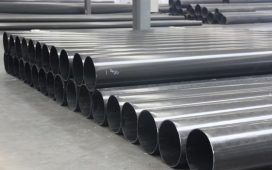Automated or algorithmic Trading Account Types involves the usage of computers that are programmed to follow a specified set of instructions for placing a trade to generate profits at a speed and frequency a human might find impossible to do.
Of course, this helps Traders Joint Account big time when they want to trade more frequently and efficiently. It sports a lot of benefits, apart from removing human inefficiencies and errors. Moreover, you can use automated trading in conjunction with various trading strategies. Here are some of them.
Trend-following Strategies
This is perhaps the most common strategy that uses automated trading. This involves following trends in moving averages, channel breakouts, price level movements, and other technical indicators. You can think of these as the simplest and most basic strategies implementable through automated trading.
That’s because in these strategies, you don’t have to make any highfaluting predictions or price forecasts. You only have to initiate trades based on the occurrences of desirable trends. These are quite straightforward strategies and easy to implement without the burden of complex predictive analysis.
Arbitrage Chances
Arbitrage involves buying dual-listed stock at a lower price in one market while selling it simultaneously at a higher price in another market. This gives you the price differential at a risk-free profit.
You can perform this strategy for stocks and futures instruments, since price differentials appear from time to time. If you implement algorithms to spot such price differentials and place the orders, you can get a good chance for arbitrage in a very efficient manner.
Index Fund Rebalancing
Index funds often have rebalancing periods that allow their holding to be on par with their benchmark indexes. As they do this, the process creates chances for profits on the side of algorithmic traders who capitalize on expected Trading Account Types that provide 20 to 80 basis points profits based non the number of stocks in the fund.
Trading Range (Mean Reversion)
Mean reversion works on top of the idea that the high and low of prices of an asset are only temporary. And because of that, prices tend to revert back to their mean value (value) periodically.
You can identify and define a price range and implement an algorithm based on that data enables the trades to be placed automatically when the price of assets breaks out of its specified range.
Volume Weighted Average Price
Volume weighted average price strategy breaks up a big order and release dynamically identified chunks of the order to the market by using stock-specific historical volume profiles. The goal is to execute the order close to the Volume Weighted Average Price.
Time Weighted Average Price
Time weighted average price strategy breaks up a huge order and releases smaller chunks of the order to the market by using evenly divided time slots between a start time and an end time. Your goal is to execute the order close to the average price between the start and end times. That means it minimizes the market impact.







